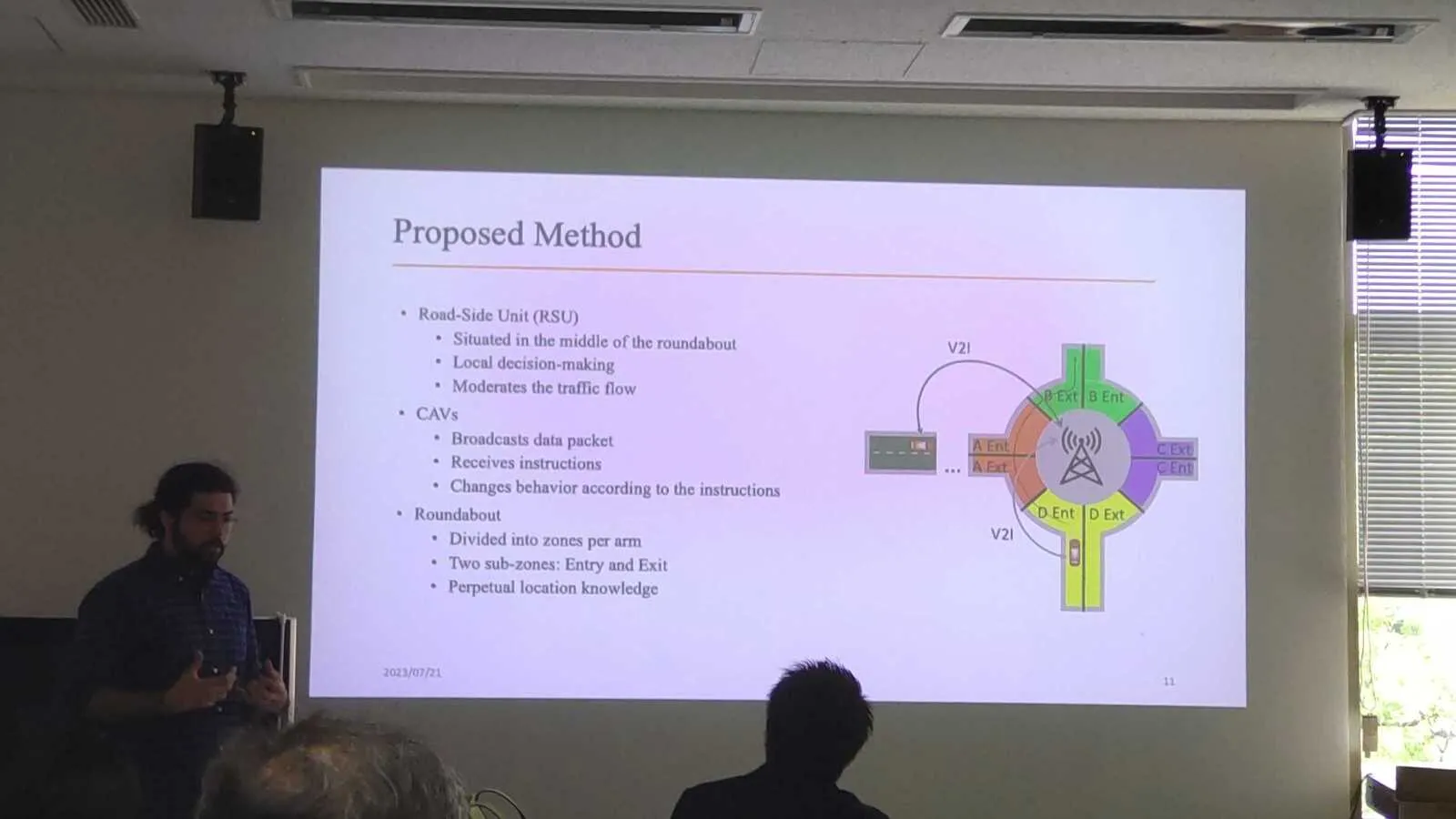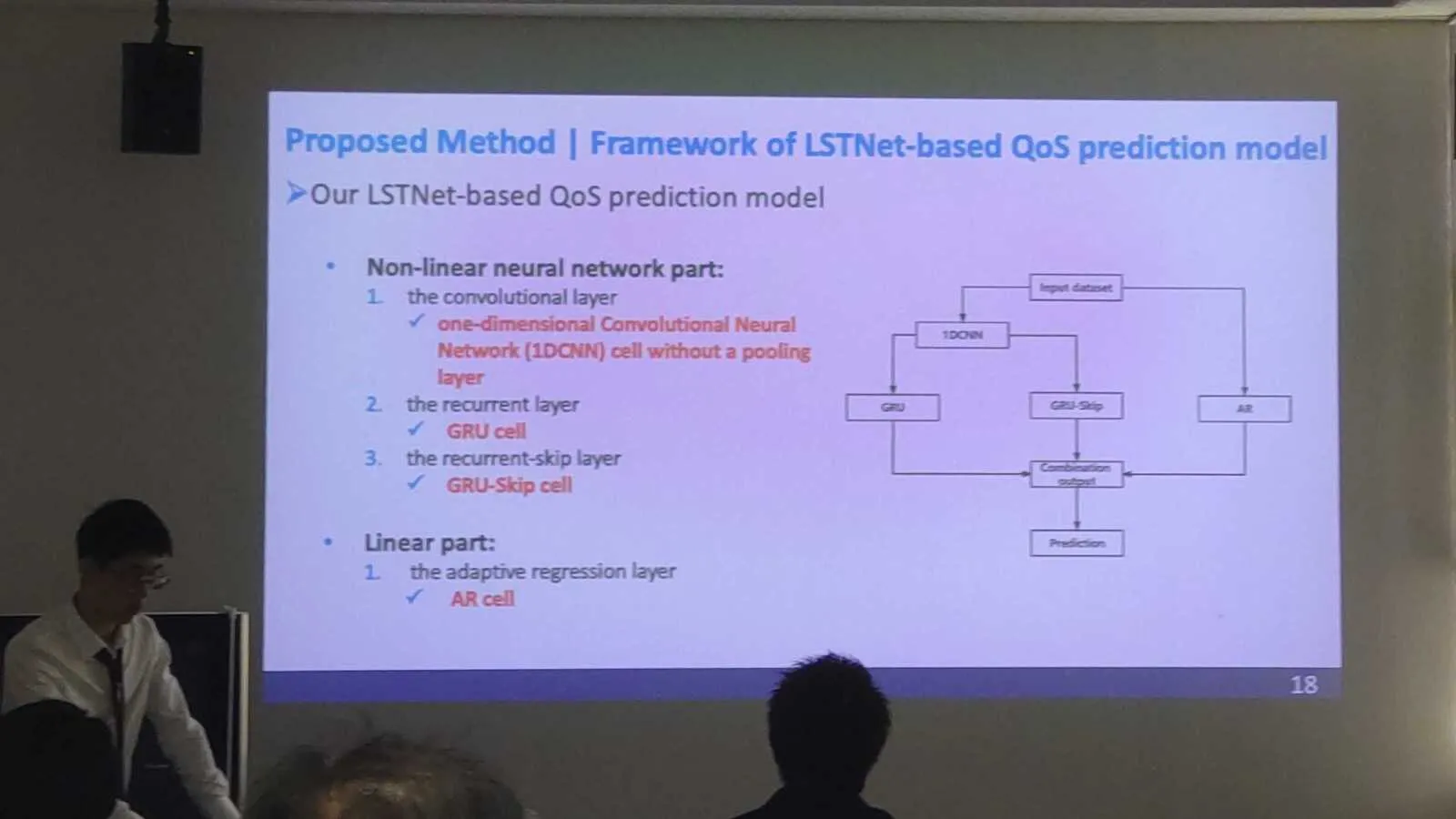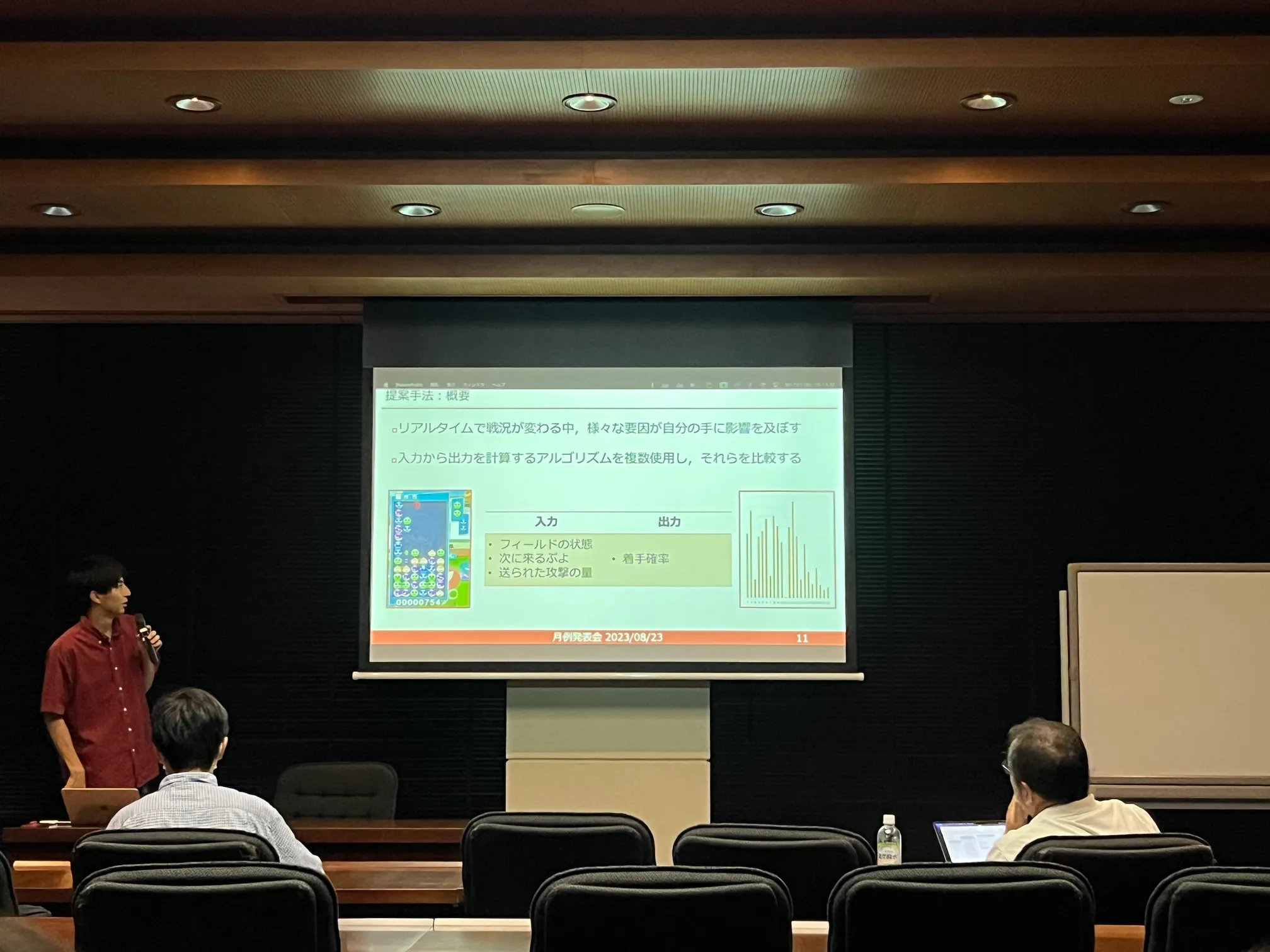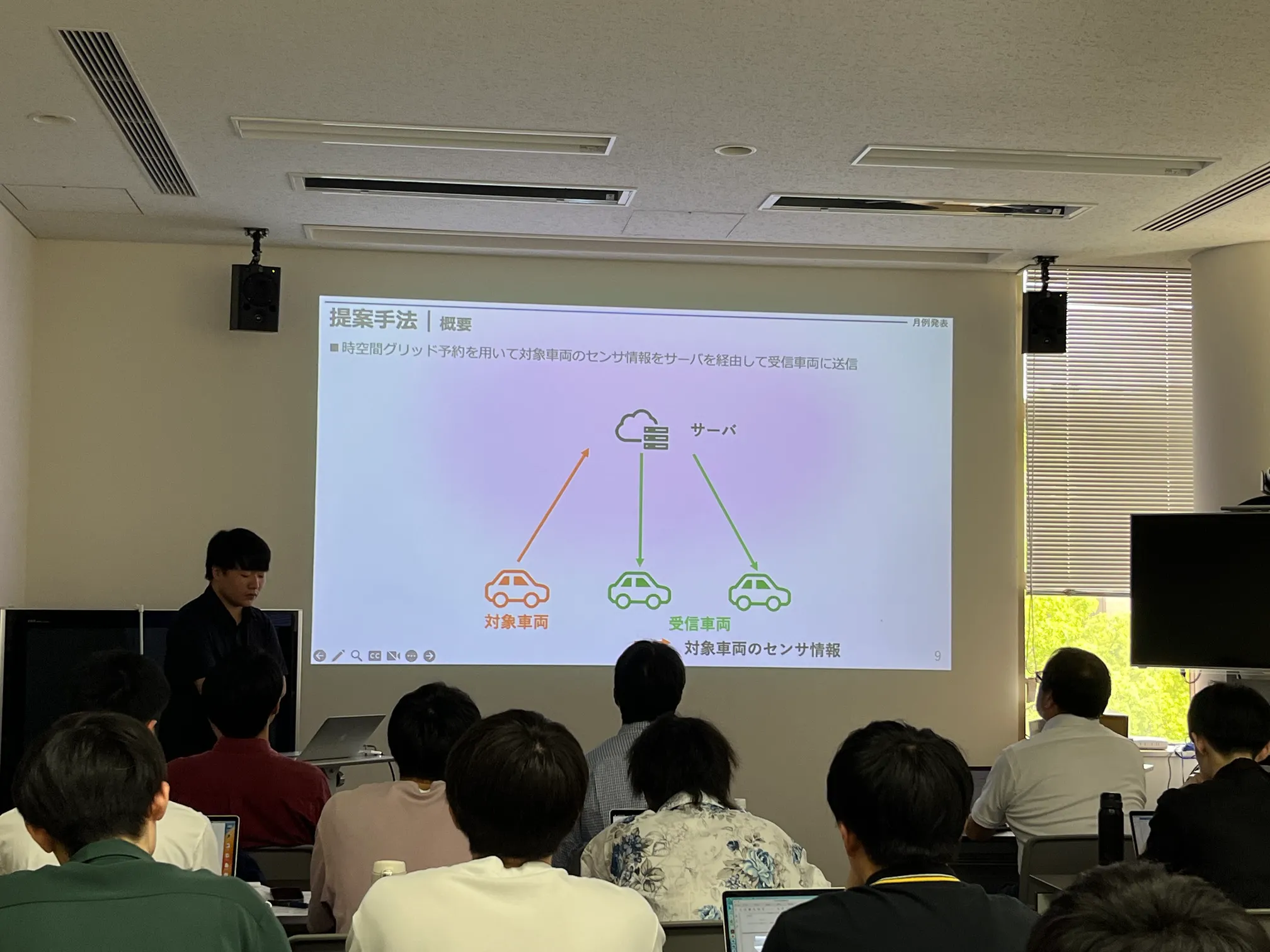2023年度の修士論文試問会において,Kaan Mogulkoc(M2),徐 煜程/Yucheng Xu(M2)の2名が以下のタイトルで発表を行いました.
V2I Based Maneuver Coordination Method to Improve Efficiency in Roundabout Situations(Kaan Mogulkoc)

The developments on Intelligent Transport Systems (ITS) and Connected Autonomous Vehicles (CAVs) are increasing rapidly and upgrades to traffic control structures must be taken in the consideration in order to accommodate such an increasing presence of connected vehicles. This paper focuses on a typical structure which both new and experienced drivers find challenging, a roundabout. This claim of a challenge is based upon anecdotal evidence and general observations. The incoming vehicle must give right of way to the vehicles traveling inside. Consequently, such a rule causes congestion and delays at the entrance lanes. This paper suggests that the CAVs do not need to abide by the rules set for human drivers and that the right of way can be changed dynamically depending on the situation. This is possible by installing a local decisions maker which oversees the traffic with V2I communications.
LSTNet-based QoS Prediction for V2X Applications(徐 煜程)

Vehicle-to-Everything (V2X) communication supports the efficiency and safety requirements of future Intelligent Transport Systems (ITS) by enabling the exchange of information. 3GPP has introduced many V2X applications, namely Cooperative Collision Warning and Emergency Vehicle Warning. 5G Automotive Association (5GAA) has defined many advanced V2X use cases, namely High-density Platooning and Tele-operated Driving (ToD). In V2X communication, there are some factors that affect the Quality of Service (QoS), such as radio and network resource availability. V2X services rely on a certain level of QoS to operate properly and provide consumers with a satisfying experience. The QoS can be measured by some Key Performances Indicators like minimum uplink (UL) or downlink (DL) throughput and maximum allowable delay. For LTE-based Vehicle-to-Vehicle applications, they may experience communication channel blocking when the number of vehicles within the communication range increases. For 5G-based V2X applications, due to the variable communication network conditions, 5G systems cannot deliver the extremely strict QoS required by advanced V2X applications. Predictive QoS is described in the 5GAA, which refers to the mechanisms in place to allow mobile networks to notify their users proactively of future changes in QoS. Having advanced knowledge of an anticipated QoS change allows V2X applications to adjust their behavior before being affected. This paper proposes an Longand Short-term Timeseries network (LSTNet) -based QoS prediction model to provide accurate prediction of QoS for V2X applications in the future period.

